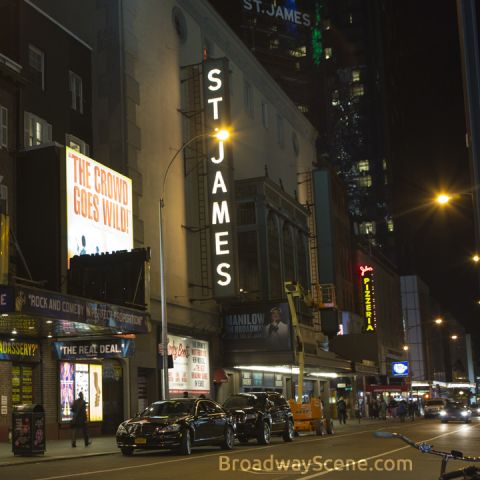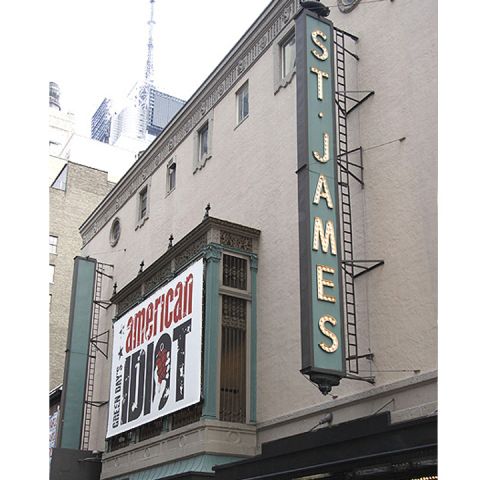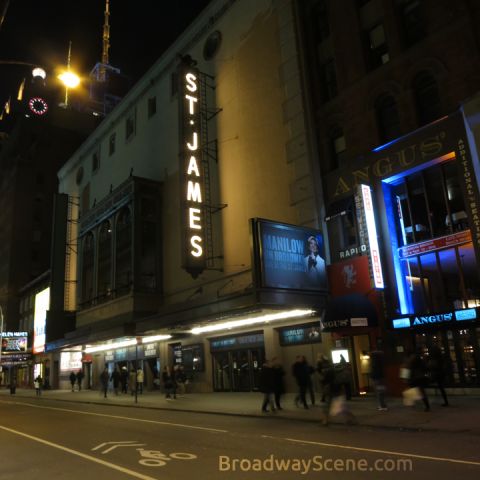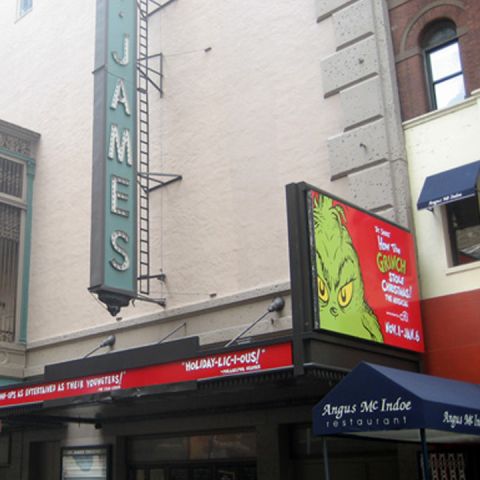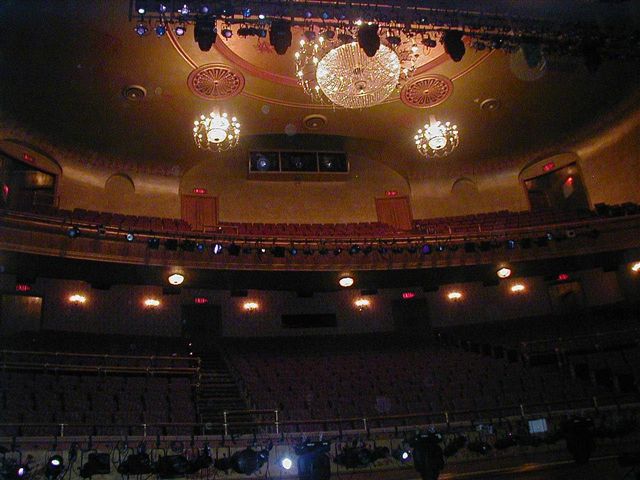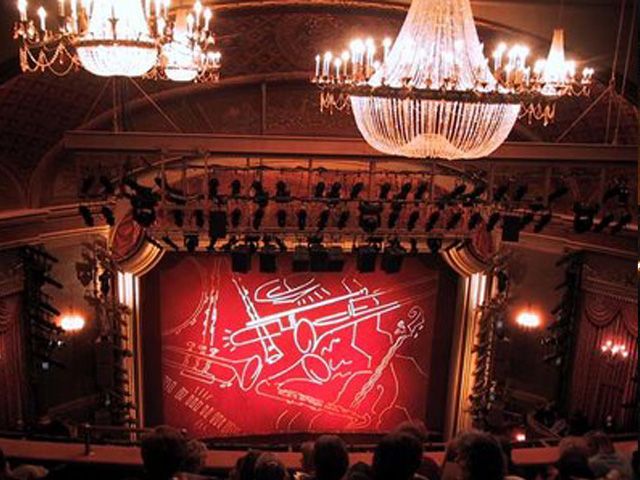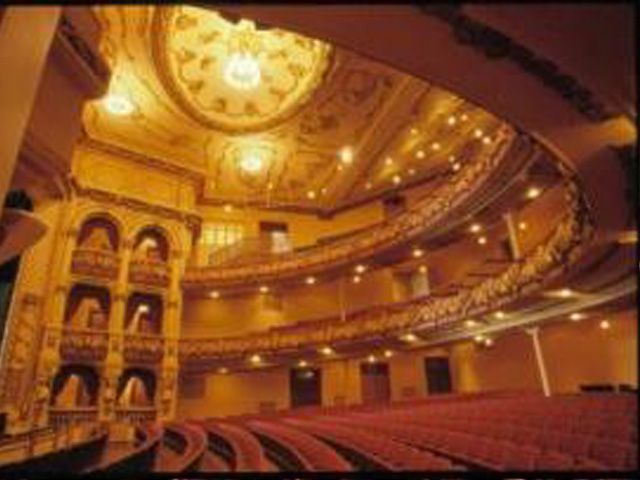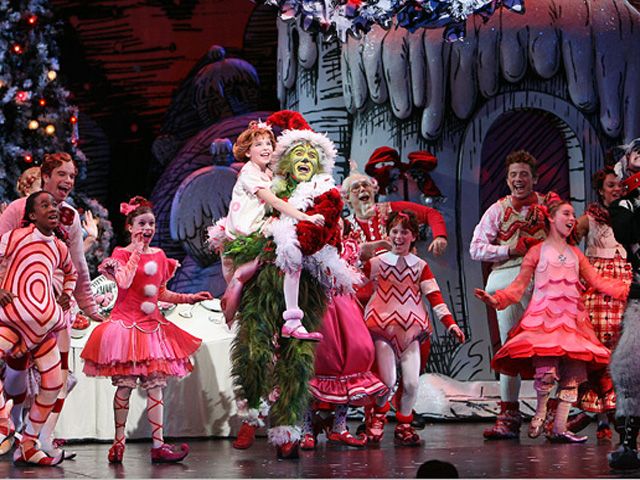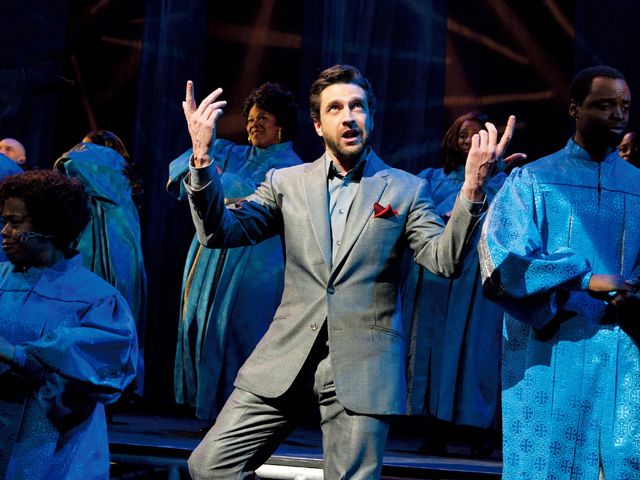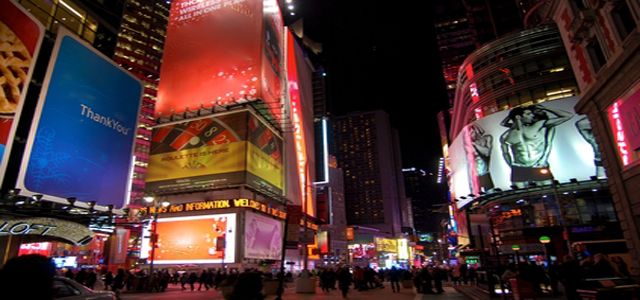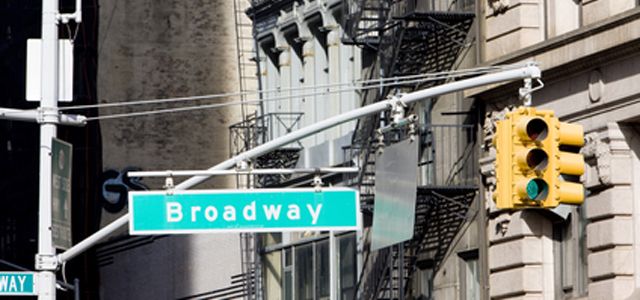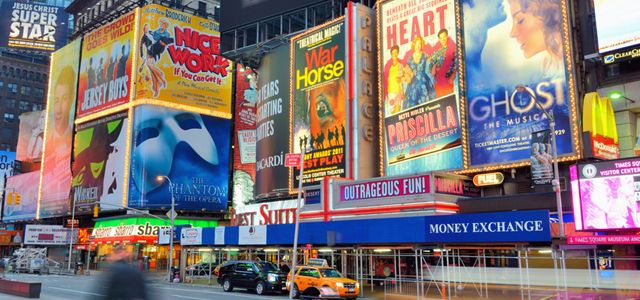The St. James Theatre
Abraham L. Erlanger, theatre producer and one of the founders of the Theatrical Syndicate, constructed the St. James Theatre at the former location of the original Sardi’s restaurant. In 1927, the theatre opened as the Erlanger. The Erlanger Theatre was initially built mainly to house musicals. In the 1930s, after Erlanger’s death, the Astor family acquired ownership of the venue and rechristened it the St. James to honor the London theatre of the same name. In 1957, Jujamcyn Theaters obtained ownership and restored the space. They continue to operate the theatre today.
From Cohan to Daly
On September 26, 1927, George M. Cohan’s musical The Merry Malones opened the Erlanger. Cohan starred in the production as well, and it proved to be a promising start for the new theatre. Donald Ogden Stewart, Kay Swift, and Paul James’s compelling musical Fine and Dandy arrived at the Erlanger in 1930. The musical featured two standards: the stimulating title number and “Can This Be Love?” The Civic Light Opera Company was housed at the theatre from May 1931 until March 1932, and it staged a hit series of Gilbert and Sullivan operettas and other musicals. For a short time after its successful run, the Erlanger went dark. It was during this time that the theatre was renamed the St. James.
The venue reopened on December 7, 1932, with a new show called Walk a Little Faster featuring London’s popular revue comedienne Beatrice Lillie. From January 1934 until April of that year, concert manger Sol Hurok presented the Ballets Russe of Monte Carlo. It was the beginning of the ballet trend in America and the concert helped initiate a more balletic style of choreography on Broadway. Other significant productions at the St. James included The King and I with Yul Brynner, Hello Dolly, and the revival of Gypsy with Tyne Daly.
Beautiful and Intimate
The St. James Theatre cost $1.5 million to build, and was the least decorative of all the Broadway theatres at the time it was constructed. The goal of the designers was not to create a theatrical atmosphere, but an intimate one. The main entrance led into an expansive marble lobby. The interior of the theatre was designed with a Georgian style, and the color scheme was coral and gold. The side walls and the proscenium arch were adorned with murals. On both sides of the proscenium, two boxes were featured. The exterior was also designed with a Georgian style and was made of marble, stone, and stucco on a granite foundation.
The theatre was renovated in 1958 by stage and interior designer Frederick Fox. He desired to reconstruct the playhouse and redecorate it from its initial design. He created a new marquee; an up-to-date lighting board; paintings; modernized dressing rooms and an enhanced stage. He also added a spanking new smoking terrace. Also included was a closed-circuit TV system so that technicians backstage could see what was happening onstage.
A Premier House
The 1,700-seat St. James Theatre is right next door to the well-known “watering hole” Angus McIndoe’s. The St. James is one of the bigger Broadway houses, but unexpectedly intimate. In 1987, the St. James was designated as a New York City landmark. This magnificent gem has housed many “firsts”—premieres, partnerships, and full-length productions. It is also where Mel Brooks’s The Producers revived American musical comedy in 2001, and where the world premiere of Oklahoma! took place in 1943, transforming American musical theatre for decades to come. The St. James is an important theatre in the celebrated history of Broadway.
Google Street View



